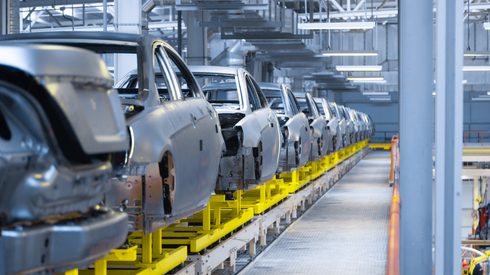How healthy is your supply chain?
In this fast-moving market, having the right insights and data is crucial. It helps businesses make smart decisions, strengthen their automotive supply chains and stay ahead in the tough battery materials market.
Use our checklist for procurement specialists in the automotive market to make a full assessment of the health of your supply chain, identify potential gaps and see how our solutions can help you navigate this competitive landscape.
Do you have visibility over supply and demand forecasts for strategic planning?
Gaining an insight into battery material price movements, as well as supply and demand dynamics is a significant advantage for any organization. The price of key battery materials remains volatile. The lithium price in particular has seen some significant declines this year.
With experts embedded in this market providing price data and market intelligence, you can stay ahead in this ever-evolving market.
Are you looking at other alternatives to diversify supply?
Battery recycling and black mass can diversify your supply of battery materials by providing alternative sources of raw materials. It can also help you meet your tough ESG goals. The recycling market has seen significant investment recently and accounts for 5% of total battery metal production.
Of the total material supplied to the market in 2023, 5% of cobalt came from battery recycling, 6% of lithium carbonate equivalent (LCE) and 1% of nickel. Fastmarkets forecasts secondary supply to increase to 12%, 7% and 5% respectively by 2033.
The Fastmarkets Battery Recycling Outlook includes 10-year battery supply and black mass price forecasts to give material manufacturers, battery makers, automakers and battery recyclers the insights and forecasts to understand and leverage the increasing recycled supply.
Are you able to set accurate cost expectations by keeping up with price changes?
Receiving daily updates on price data helps you understand the current value of raw materials, which in turn forms the basis for buying, selling and trading strategies.
Fastmarkets forecasts that cell costs will continue to come down in the short-term. Nickel, cobalt manganese (NCM) 811 and lithium iron phosphate (LFP) both have the potential to reach below 70 dollars per kWh on the cell-level by 2029. However, beyond this point, there is a risk of constrained supply pushing costs back up.
The Fastmarkets Battery Cost Index tracks and offers key insights into the cost of cathode active materials (CAM), anode materials and chemistries across different regions.
These are just some of the questions in our checklist for procurement. Find out how you’re performing and where the gaps are. Our battery material outlooks and forecasts will provide you with all the data and analysis you need to find procurement success.






